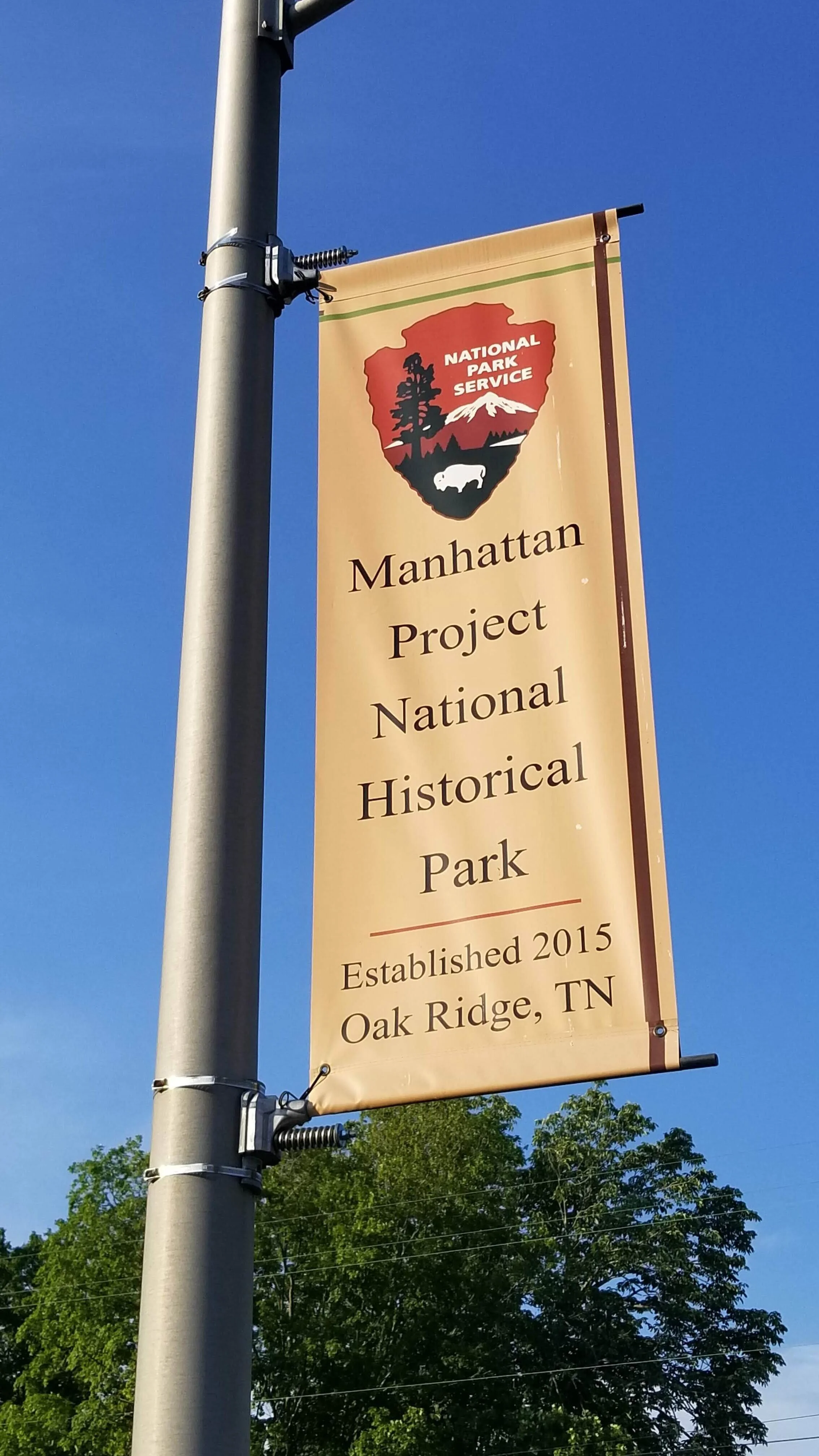Seven National Parks you'll find in East Tennessee
Many mountain streams make their way through the Great Smoky Mountains National Park.
1. Great Smoky Mountains National Park
Wild mountain streams, thick forests, waterfalls and historic communities draw millions of people to the Great Smoky Mountains National Park making it one of the most visited National Parks in the United States. The park encompasses 244,000 acres in Tennessee and North Carolina.
Tennessee's highest peak lies deep inside the Great Smoky Mountains. From the observation deck on top of the mountain you get a real sense of the beauty throughout East Tennessee (and Western North Carolina). More than 9-million people come to the Smokies each year, making it the star of National Parks in East Tennessee, but there are many more within a couple hours drive of Knoxville.
U.S. 441 runs through the park and it’s well worth going on to Norris, TN on this highway for a great road trip.
The Foothills Parkway provides some of the best views of the Smoky Mountains with the newest section between Walland and Pigeon Forge being one of the best ways to see the majestic mountains.
The Big Creek area of the park is just a short distance off I-40 near the Tennessee/North Carolina State Line.
Greenbrier provides great ways to get up close to one of the many Smoky Mountain streams and rivers. You’ll find it between Gatlinburg and Cosby on the Tennessee side.
2. Big South Fork National River and Recreation Area
Big South Fork National River and Recreation area straddles the Tennessee & Kentucky state line. Compared to other National Parks, it's relatively new, created in 1974. U.S. Senator Howard Baker, Jr. was one of the primary supporters of creating the park. The gorge created by the Big South Fork of the Cumberland River is the main draw, but the park is filled with natural arches, waterfalls, opportunities for whitewater kayaking, and a great deal of history including a look at life in a coal mining camp, and an English Utopian settlement.
While this park isn't much further from Knoxville than Great Smoky Mountains Naitonal Park, the crowds don't seem to gravitate toward it, making it easy to really get away from it all. Angel Falls and the O&W Bridge Trail are both trails that take you through the deep gorge at Big South Fork and are relatively easy to hike.
Rock climbing, hiking and enjoying the beauty of the river are the main attractions at the Obed Wild and Scenic River.
3. Obed Wild and Scenic River
Not far from Big South Fork, the Obed Wild and Scenic River offers spectacular views of a truly wild river and abundant opportunities for rock climbing. And while I haven’t done so yet, the Obed Park offers a chance for free rock climbing at its “Coffee and Climb with a Ranger” program offered one day each month. .
The Visitors Center and Park Office are not located within the park itself. You’ll find both in Downtown Wartburg just off U.S. Highway 27.
The view from the Pinnacle Overlook allows you a great view of the small town of Cumberland Gap below.
4. Cumberland Gap National Historic Park
The original gateway to the American West is located where Tennessee, Kentucky and Virginia all come together. The Cumberland Gap National Historic Park protects not only the natural beauty of the area, but also works to tell the story of how explorers and Daniel Boone helped use a natural break in the Cumberland Plateau to help settle the Western U.S. .
Whether it's walking out to the Pinnacle Overlook, hiking to the Tri-State peak, going deep inside the mountain in the Gap Cave, or just learning more about Daniel Boone's travels, this park should be a must see on anyone's list.
The view from Point Park on Lookout Mountain in Chattanooga.
5. Chattanooga/Chickamauga National Military Park
Another park centered on history is the Chattanooga/Chickamauga National Military Park located in the Southeastern part of Tennessee and part of Northwest Georgia. On the Tennessee side, views from Point Park on Lookout Mountain provide unparalleled views of the Chattanooga and the Tennessee River.
Inside the park you also get an idea of what soldiers in the Civil War went through as they camped out on the mountain. Just a few miles away, on the other side of Lookout Mountain is the Chickamauga Battlefield portion of the park (in Ft. Oglethorpe, GA), a solemn reminder of the many sacrifices soldiers made during the Civil War.
The home of President Andrew Johnson is one of several sites related to this historical figure that are part of the Andrew Johnson National Historic Site.
6. Andrew Johnson National Historic Site
President Andrew Johnson, America’s 17th President had humble beginnings in Greeneville, Tennessee where h moved at a young age. He was a tailor by trade who eventually made his way into politics and served as President Abraham Lincoln’s Vice-President. After Lincoln’s assassination, Johnson became President and had the dubious distinction of becoming the first President to be impeached. The Senate did not remove him from office and he did not seek a second term as President. Instead he would return to Washington as a U.S. Senator.
Visitors to the Andrew Johnson National Historic Site can see the President’s Tailor Shop which is enclosed in the Visitors Center, the President’s home and where he is buried inside a National Cemetery.
7. Manhattan Project National Historical Park
A portion of the Manhattan Project National Historic Park is in Oak Ridge.
The newest park in East Tennessee is the Manhattan Project National Historical Park and it’s still under development. The park tells the story of the development of the first atomic bombs. Oak Ridge, TN played an important part in that effort and many sites throughout the city are part of the park along with sites in Washington State and New Mexico.
The Visitors Center for the Oak Ridge portion of the park is inside the Children’s Museum of Oak Ridge. Rangers often lead guided walks and other excursions to help people better understand what happened in East Tennessee’s Secret City. The Department of Energy also offers a tour of the historic sites starting at the American Museum of Science and Energy.














